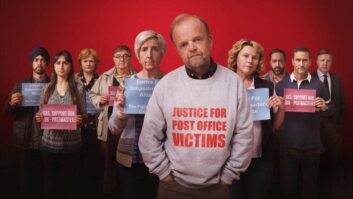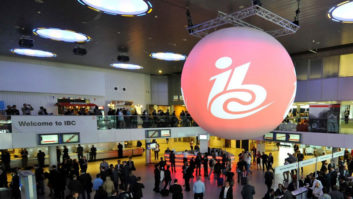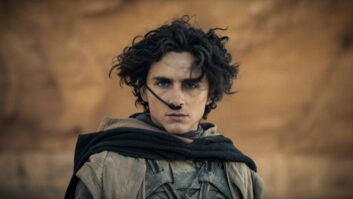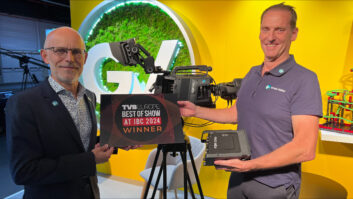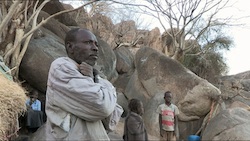
The surest rule of TV news journalism is that the deadliest conflict zone will always attract squads of freelancers who are happy to back their camera against any bullet with their name on it. But without trusty fixers and good safety training, photojournalism would often be too dangerous to risk.
It was no surprise that a third of the 55 entries in this year’s Sony-sponsored Rory Peck Awards were reports from Syria. During 2012 freelance journalism has made its biggest ever contribution to the news agenda and, paradoxically, the filmic quality of what broadcasters are fed to edit and air has improved hugely despite fast-increasing risks of death, injury, and abduction.
It was hard to spot the certain winner in all three categories of the awards, but the trust itself – on the verge of achieving a significant profile in the US, and awarding record numbers of safety training bursaries – was the big story of the night. It now watches the back of every freelancer out there.
Not just bang-bang
The winner of the news award, with Horror in Homs, was the French photojournalist Mani, who had several self-assuring advantages. He is an Arabic speaker, had studied in Syria and had been to Homs for a photo shoot in October 2011. He also travelled widely through the region in his younger years in a bid to understand Muslim and Arabic societies.
Mani used a Canon 5D MK II. His street fighting and sniper alley elements are stunning, but he wanted a different emphasis.
“I liked the way it was edited because they [C4 News] haven’t shown only the bang-bang. The story was really about the civilians suffering cruel suppression,” he said. “On my first visit, Homs was already the hot bed of the uprising and the regime was unable to crush them easily. When I went back (in January/February) the situation was dire – more militias, more sectarian violence, more snipers, but the Free Syrian Army was taking control on the ground.”
Did he do any safety training before going to Homs? “No. But when I was back and started working for C4 it was the first thing they demanded,” Mani said.
No myths or heroes
The Spanish photojournalists Alberto Arce and Ricardo Garcia Vilanova won the feature category with Misrata, Victory or Death.
They got out on a rebel group boat from Malta. “One of the organisers of this was the doctor of the former Libyan ambassador to Spain, so we had friends in common in Madrid,” said Arce. “We needed money to pay the rent and we made an assessment on a window of opportunity for selling our work – and we decided it was the siege of Misrata.”
His starkest memory is of their main fixer. “He was a soft, kind, gentle and well educated engineer from a wealthy family who was absolutely against violence in May. Four months later he was one of the guys who killed Gadaffi,” Arce said.
“What happened in his mind? Everybody with a Kalashnikov in his hand, with the greatest reasons for the revolution, becomes an asshole after a couple of months,” he added. “Nobody knows how to deal with the power of having weapons and fighting. There were 20,000 fighters, but the ones winning were 1,000 strong. I am not going to create any myths or make heroes of anybody waving a weapon.”
Bombing civilians
The Sony Impact award went to Daniel Bogado’s Unreported World episode Terror in Sudan (pictured). All the horror of this story (from a long-standing civil war) happened in the Nuba region, through bombing by president Omar al-Bashir’s jets, and it featured the most memorable image of the night – treatment of an 11-year-old boy that had lost part of his face and an eye to shrapnel injury. He later died due to tetanus, and the lack of drugs to save him.
Reporter Aiden Hartley took the story idea to Bogado, a veteran of many challenging environments. “I heard that 350,000 people were living in caves. The main focus was always going to be the civilians. I was not interested in showing the battles and military side of the story,” he said. “To me the compelling story was about how civilians were being bombed by their own government, denied crucial food and aid supplies, and denied life-saving drugs.”
In 10 days Bogado shot 25 hours of content. Did he and Hartley have fixers or minders? “The locals were accepting of us. We were there with a rebel escort,” he said. “It is always difficult being embedded because you cannot rely on the hosts for your safety. But there were many times (at a hospital and in the street) we were without an escort and we just talked to people. We had so much material, we had to think carefully about editing it.”
Boss and sponsor
Tina Carr, the director of The Rory Peck Trust, is planning an event like the awards night for New York. And in October the trust helped the Columbia University Graduate School of Journalism to run a three-day freelance safety based workshop. It also provided 11 bursaries to American and Canadian freelancers.
“There has been a naturally developing relationship between us and the Americans,” said Carr. “It is made possible because we have one very strong American supporter in NBC News, which two years ago invited me to meet all the heads of news from the networks. It did not have the effect of raising funds, but it did raise the profile.”
Olivier Bovis, Sony Europe’s head of AV/media professional solutions, spoke for the awards sponsor. “The trust is gaining momentum, reaching freelancers all round the world, and then there is the quality of the work freelancers are producing,” he said. “There is conflict everywhere and you see these guys just pushing the limits; the amount of risk they take and the quality of the work they bring out is astonishing, and it gets better every year.
“Technology plays a role in making things easier to access, shoot and return, but when a freelancer is running and bullets are flying about no matter what kit you are using, you need the guts to do it.”
By George Jarrett
